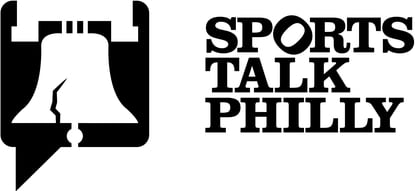By Brandon Apter, Sports Talk Philly editor
If you talk to anybody that is a Phillies fan or even follows the team from time to time and ask them who the future shortstop of the team is, what would the answer be? J.P. Crawford. While we continue to wait until Jimmy Rollins' heir arrives, Freddy Galvis has done a nice job being a placeholder in between the two. Frankly, Galvis' defense combined with recent offensive power has put him in a position to win the National League Gold Glove award for shortstop.
Stop thinking about Galvis' batting average and on-base percentage for a second and let's look at the defensive side of the game. In his second full season as the Phillies starting shortstop, Freddy has a fielding percentage of .989, 16 points higher than 2015 and highest among qualifying National League short stops. Yep, you read that right. Galvis has a better fielding percentage than Asdrubal Cabrera of the Mets (.987), Brandon Crawford of the Giants (.981), Zach Cozart of the Reds (.980) and Addison Russell of the Cubs (.978) among others. The Major League Baseball average fielding percentage for shorstops is .975. Galvis ranks third in all of baseball in fielding percentage, behind only Detroit's Jose Iglasies and Baltimore's J.J. Hardy.
If fielding percentage isn't enough to convince you, in 558 total chances this season, Galvis has only six errors, tied for the fewest among qualifying NL shortstops with Asdrubal Cabrera. Last season, he had 17. Since the All-Star Break alone, Freddy has only committed one error.
Let's move to defensive wins above replacement, which indicates Galvis' value to the team over a replacement-level player, who would be a player with commons skills at a minimal cost to the team. In 2016, Freddy's dWAR is 0.9 and his overall is 0.7. Compared to other National League shortstops, Galvis is among leaders as well. Asdrubal Cabrera's dWAR is -0.4, Jordy Mercer's is -0.2 and Corey Seager is at 0.6.
Although it is mostly defensive stats that go into determining a gold glove, padding it with offensive ones is always a good thing. Average and OBP aside, Galvis has exceeded expectations offensively anyway, hitting 18 homers with 17 games to play. His 10 home runs since the All-Star Break are tied for first among Major League shortstops with Jonathan Villar of the Brewers. He hit a total of seven last season. He's driven in a career-high 62 runs as well.
Diving just a little bit deeper into the defensive sabremetrics, we are going to compare Galvis' numbers to Asdrubal Cabrera and Jordy Mercer in a few categories as the trio is ranked in the top three when it comes to qualifying NL shortstops fielding percentage. In DRS (defensive runs saved), Galvis has 2 while Cabrera is at -9 and Mercer is at -8. Per Fangraphs, Defensive Runs Saved (DRS) is a defensive statistic calculated by The Fielding Bible, that rates individual players as above or below average on defense. More or less, defensive runs saves is the calculation of the players total defensive value.
The next category, RZR (revised zone rating), is based on the number of outs the player has converted with balls hit in their fielding zone. Galvis' percentage is .834, Cabrera is .721 while Mercer is at .767. This percentage is calculated by the number of balls hit into the players' zone, which was 302 for Galvis, and how many total plays were made (252).
Finally, let's take a look at UZR, or Ultimate Zone Rating, one of the most widely used, publicly available defensive statistics.
Per Fangraphs, UZR puts a run value to defense, attempting to quantify how many runs a player saved or gave up through their fielding prowess (or lack thereof). There are a couple different components to UZR, including:
- Outfield Arm Runs (ARM) – The amount of runs above average an outfielder saves with their arm by preventing runners from advancing.
- Double-Play Runs (DPR) – The amount of runs above average an infielder is by turning double-plays.
- Range Runs (RngR) – Is the player an Ozzie Smith or an Adam Dunn? Do they get to more balls than average or not?
- Error Runs (ErrR) – Does the player commit more or fewer errors compared with a league-average player at their position?
Galvis' UZR rating this season is 10.4 while Cabrera's is -4.9 and Mercer's is -8.9. If Mercer and Cabrera comparisions aren't doing anything for you, according to Fangraphs, Derek Jeter's UZR was -18 in 2007, 6.3 in 2009 when they beat the Phillies in the World Series and -8.3 in his final year in the league. He never had a rating above 10. Meanwhile, former Phillies shortstop Jimmy Rollins' UZR was 12.8 in the 2008 Championship season, but never eclipsed a rating over 10 again in his career. So, in a nutshell, Galvis has been having an extremely good season in the field.
In conclusion, say what you want about Freddy Galvis, but for a guy who was never truly viewed as a long-term starter with the team with J.P. Crawford potentially under a year away from a debut, he's been stellar defensively this season and has even added pop offensively.
Last season, Brandon Crawford won the shortstop Gold Glove for the National League after Andrelton Simmons had won it two straight years while he was with the Braves. Jimmy Rollins won the award for three straight seasons (2007-09) and again in 2012 with the Phillies.

